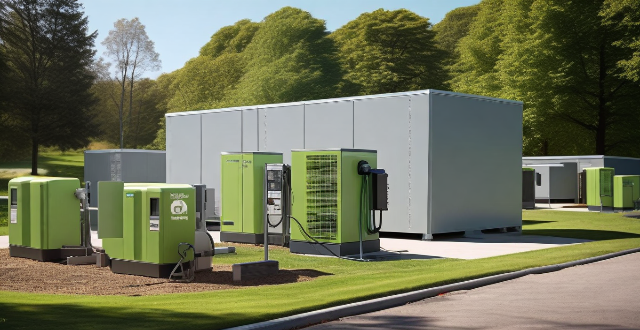The impact of different types of charging stations on the overall network design can be seen in various aspects such as infrastructure, cost, energy consumption, and user experience. Fast charging requires higher power output and specialized equipment, leading to more expensive installation and maintenance costs and increased energy consumption. Slow charging has less stringent infrastructure requirements and is more cost-effective but may not meet the needs of users who require quick charges. The overall network design needs to consider these trade-offs and ensure that the grid remains stable and reliable while providing a good user experience for all types of charging needs.

How Different Types of Charging Stations Affect the Overall Network Design
Different types of charging stations, such as fast charging and slow charging, have a significant impact on the overall network design. This impact can be seen in various aspects of the network, including infrastructure, cost, energy consumption, and user experience.
Infrastructure
Fast Charging
Fast charging requires higher power output and specialized equipment, which means that the infrastructure needs to be designed to handle these requirements. This may involve upgrading existing power grids or installing new ones to ensure that there is enough capacity to support fast charging stations. Additionally, fast charging stations need to be strategically placed to minimize travel time for users who need quick charges.
Slow Charging
Slow charging, on the other hand, has less stringent infrastructure requirements. It can be integrated into existing power grids without significant upgrades. Slow charging stations can also be placed in more locations since they do not require high power output. However, slow charging stations need to be conveniently located for users who plan to charge their vehicles over extended periods, such as overnight.
Cost
Fast Charging
Fast charging stations are more expensive to install and maintain than slow charging stations due to their specialized equipment and higher power requirements. The cost of electricity is also higher for fast charging since it consumes more energy per unit of charge. Therefore, the overall network design needs to consider the trade-off between the cost of fast charging stations and the benefits they provide in terms of reduced charging times.
Slow Charging
Slow charging stations are less expensive to install and maintain than fast charging stations. They also consume less energy per unit of charge, making them more cost-effective in the long run. However, slow charging stations may not meet the needs of users who require quick charges, which could lead to dissatisfaction and reduced adoption of electric vehicles.
Energy Consumption
Fast Charging
Fast charging consumes more energy per unit of charge than slow charging. This increased energy consumption can put a strain on the power grid, especially during peak demand periods. The overall network design needs to consider how to manage this increased energy demand while ensuring that the grid remains stable and reliable.
Slow Charging
Slow charging consumes less energy per unit of charge than fast charging. This reduced energy consumption can help to balance the load on the power grid and reduce the risk of blackouts or brownouts. However, slow charging may not be suitable for all users, especially those who require quick charges.
User Experience
Fast Charging
Fast charging provides a better user experience for those who require quick charges, such as drivers who need to recharge their vehicles during short breaks or commuters who only have limited time to charge their vehicles. However, fast charging stations may be less accessible or conveniently located than slow charging stations, which could affect user satisfaction.
Slow Charging
Slow charging provides a good user experience for those who plan to charge their vehicles over extended periods, such as overnight or while at work. Slow charging stations can be more easily integrated into existing infrastructure and placed in convenient locations for users. However, slow charging may not meet the needs of users who require quick charges, leading to dissatisfaction and reduced adoption of electric vehicles.